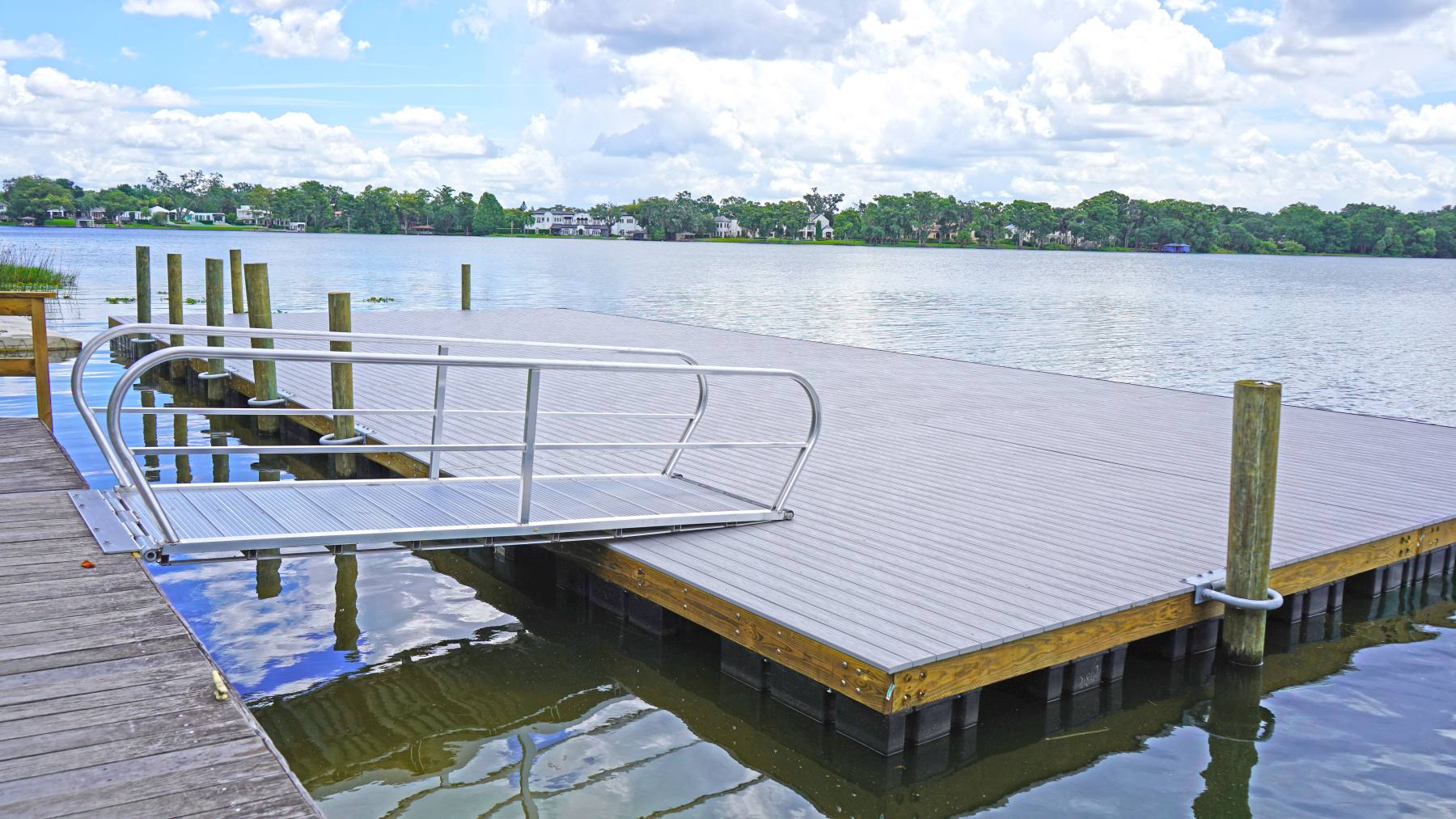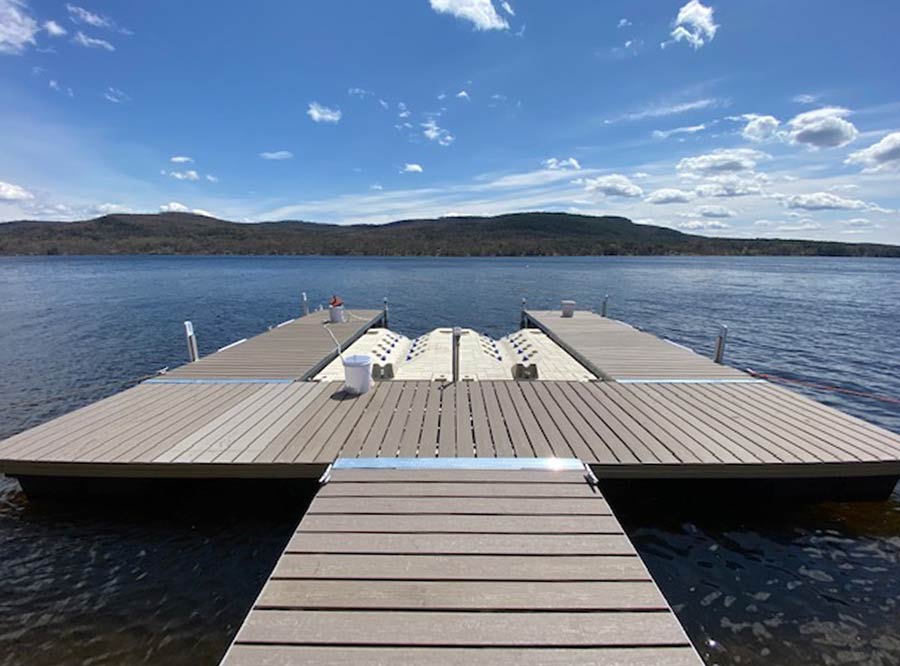The Ultimate Overview to Picking the very best Floating Docks
Choosing the excellent floating dock calls for a comprehensive understanding of different components that affect both performance and durability. Variables such as dock types, materials, and essential functions substantially affect your decision-making procedure.
Comprehending Floating Dock Kind
When choosing a drifting dock, it is vital to understand the various types offered, as each offers distinct purposes and applications. Floating docks mostly come under three classifications: modular, fixed, and pontoon docks.
Modular docks are composed of individual sections that can be easily assembled or reconfigured, making them optimal for altering water levels and diverse usages, such as industrial operations or leisure activities. Their flexibility permits customization based on details demands.

Pontoon docks are characterized by their buoyant structure, often made up of numerous pontoons that offer stability and assistance. They are especially well-suited for larger vessels and are commonly utilized in marinas or for waterfront properties. Recognizing these types help in selecting one of the most appropriate floating dock to meet details requirements, ensuring ideal functionality and security.
Key Materials for Durability
Picking the ideal products for floating docks significantly effects their durability and longevity. One of the most common materials consist of timber, plastic, metal, and composite products, each offering distinct benefits and restrictions.
Timber, frequently preferred for its aesthetic appeal, requires normal upkeep to endure wetness and decay. Pressure-treated lumber can enhance resistance to rot, however it might still be prone to parasites and weathering.

Plastic docks, constructed from high-density polyethylene (HDPE), are immune to rust, UV radiation, and impact, making them a prominent choice for coastal environments. Their lightweight nature likewise assists in very easy installment and moving.
Metal docks, normally constructed from light weight aluminum or galvanized steel, provide outstanding toughness and toughness. They are resistant to corrosion, particularly when dealt with, however may need extra insulation to protect against heat build-up in warm climates.
Composite materials, integrating timber fibers and plastics, supply the advantages of both wood and plastic, resisting wetness and fading while requiring minimal upkeep. - floating dock builder
Eventually, the selection of materials must line up with environmental problems, planned use, and upkeep choices to ensure the floating dock continues to be functional and aesthetically pleasing over time.
Vital Features to Take Into Consideration
While the selection of products is essential, taking into consideration essential functions for floating docks is just as vital to make sure optimal performance and individual fulfillment. One key function to evaluate is the dock's buoyancy ability, which figures out just how much weight it can support without immersing. floating dock services. This is vital for accommodating watercrafts, personal boat, and also entertainment activities
In addition, transportability is a significant factor to consider. Relying on your demands, you may want a dock that is simple to disassemble and move, specifically if you plan to transfer it seasonally. Security is one more essential feature; a well-designed floating dock needs to lessen motion created by wind and water currents, offering a safe and secure platform for customers.
Security functions, such as non-slip surfaces and rounded sides, are also important to stop crashes, specifically in damp conditions. Consider the availability of devices, such as cleats, ladders, and bumpers, which can enhance the functionality of your dock.
Installation and Maintenance Tips
Establishing up and maintaining a floating dock requires cautious preparation and attention to information to ensure its longevity and ideal performance. Begin by choosing an ideal area that decreases exposure to strong currents and waves, which can create deterioration. Make sure that the water deepness suffices for the dock's height which it is anchored firmly to avoid activity.
During setup, adhere to the producer's standards closely, as incorrect assembly can compromise stability. Usage premium products resistant to rust, such as light weight aluminum or dealt with wood, to improve sturdiness. Frequently evaluate all components, including floats, adapters, and securing systems, for signs of damages or wear.
Upkeep is crucial for prolonging the life of your dock. Tidy the surface areas occasionally to stop algae accumulation and look for any kind of loose fittings wikipedia reference that may call for firm. If your dock uses flotation gadgets, guarantee they continue to be totally free and intact from leaks. Furthermore, consider using safety coverings to wood components to lower weathering effects. By sticking to these installation and maintenance suggestions, you can take pleasure in a reputable and useful floating dock for several years to come.
Budgeting for Your Dock
Budgeting for your dock is an essential action that can considerably affect your general satisfaction and investment in a waterside property. Developing a clear budget plan helps you browse the numerous choices offered and ensures you make informed choices that line up with your financial capabilities.
Begin by establishing the size and style of the dock you need, as these factors will substantially affect the cost. Floating docks can differ dramatically in cost, depending on materials, buoyancy, and functions like devices and ramps. Research study different suppliers and vendors to compare rates and recognize the market worth.
In addition to initial costs, take into consideration recurring expenditures such as maintenance, insurance, visit this web-site and potential repair services. Allocate funds for these reoccuring expenses to stay clear of shocks down the line. It's additionally prudent to allocate any type of necessary permits or examinations, which may be needed by neighborhood policies.
Last but not least, remember the prospective return on financial investment. A well-planned dock can improve your home's worth and charm, providing a favorable monetary influence in the long term. By budgeting efficiently, you can guarantee that your dock fulfills your requirements without endangering your economic security.
Conclusion
In conclusion, picking the suitable floating dock necessitates a detailed examination of different factors, consisting of dock types, products, necessary features, and installment processes. Careful factor to consider of monetary restraints will further make certain a sound financial investment.

While the option of materials is crucial, thinking about necessary features for floating docks is similarly crucial to make certain optimal efficiency and customer my site complete satisfaction.Establishing up and maintaining a drifting dock requires cautious preparation and attention to information to ensure its durability and optimal performance. Floating docks can differ substantially in price, depending on products, buoyancy, and features like ramps and devices.In conclusion, selecting the suitable floating dock requires a comprehensive examination of various variables, consisting of dock types, products, crucial features, and installment procedures.